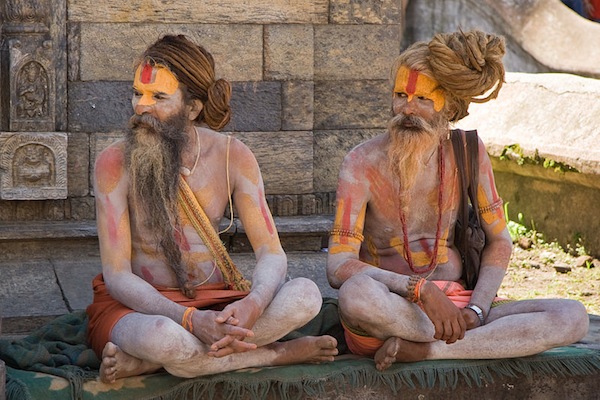The Journey from Yama to Samadhi – 8 Limbs of Yoga

Patanjali’s Yoga Sutras, one of the most revered ancient texts on the practice of yoga, outlines eight limbs that form the path of Ashtanga Yoga. The eighth and final limb, samadhi, is considered the ultimate goal of yoga, representing a state of deep meditation or trance in which the individual experiences a profound sense of peace, unity, and self-realization.
The word “samadhi” is derived from the Sanskrit root “sam” which means “to bring together” or “to unite”, and “a” meaning “towards”, and “dhi” meaning “mind”. Samadhi, therefore, refers to a state in which the mind is brought together and united in a state of pure consciousness, beyond the dualities of pleasure and pain, good and bad, and self and other.
In samadhi, the distinction between the self and the universe becomes blurred, and the individual experiences a profound sense of oneness with all that exists. It is considered a state of pure consciousness, in which the individual is fully absorbed in the present moment, and experiences a deep sense of peace, unity, and self-realization. The experience of samadhi is often described as a state of bliss, in which the individual transcends the limitations of the physical world and experiences a profound sense of connection with the divine.
The process of reaching samadhi requires a disciplined and dedicated yoga practice, and the mastery of the preceding seven limbs of yoga: yama, niyama, asana, pranayama, pratyahara, dharana, and dhyana. The first five limbs focus on the external aspects of yoga practice, including ethical considerations, physical postures, and breathing techniques, while the last three limbs focus on the internal aspects of yoga, including concentration, meditation, and eventually, samadhi.
The practice of yoga aims to bring the individual to a state of stillness and tranquility, in which the mind becomes completely absorbed in the present moment and transcends the limitations of the physical world. This state of stillness and tranquility is achieved through the practice of the eight limbs of yoga, each of which builds upon the previous limb and prepares the individual for the next step on the path of self-discovery and liberation.
The first limb, yama, involves the practice of five ethical considerations, including non-violence, truthfulness, non-stealing, non-excess, and non-possessiveness. These ethical considerations are seen as the foundation of a harmonious and fulfilling life, and serve to purify the mind and prepare the individual for the practice of yoga.
The second limb, niyama, involves the practice of five internal observances, including purity, contentment, self-discipline, self-study, and surrender to the divine. These internal observances help to purify the mind and prepare the individual for the practice of yoga, by fostering a sense of inner peace, contentment, and self-awareness.
The third limb, asana, involves the practice of physical postures designed to cultivate physical strength, flexibility, and balance, as well as to purify the body and prepare the mind for the practice of yoga. The physical postures in yoga are designed to bring the individual into a state of stillness and tranquility, in which the mind becomes absorbed in the present moment and transcends the limitations of the physical world.
The fourth limb, pranayama, involves the practice of controlled breathing techniques, designed to control and regulate
the flow of prana, or life force, throughout the body. Controlled breathing helps to calm the mind, increase mental clarity, and prepare the individual for the practice of yoga.
The fifth limb, pratyahara, involves the practice of withdrawing the senses from external stimuli, in order to cultivate a state of inner stillness and tranquility. Pratyahara helps to purify the mind and prepare the individual for the practice of yoga, by fostering a sense of inner peace and self-awareness.
The sixth limb, dharana, involves the practice of concentration, in which the individual focuses the mind on a single object or thought, to the exclusion of all else. Dharana helps to cultivate mental focus and clarity, and prepares the individual for the practice of yoga by fostering a sense of inner peace and self-awareness.
The seventh limb, dhyana, involves the practice of meditation, in which the individual becomes fully absorbed in the present moment, and experiences a deep sense of peace, unity, and self-realization. Dhyana helps to cultivate mental focus, clarity, and tranquility, and prepares the individual for the practice of samadhi.
The practice of samadhi requires the mastery of the preceding seven limbs of yoga, as well as a dedicated and disciplined yoga practice. In samadhi, the individual experiences a profound sense of inner peace, unity, and self-realization, and transcends the limitations of the physical world. The experience of samadhi is considered the ultimate goal of yoga, representing a state of deep meditation or trance in which the individual experiences a profound sense of peace, unity, and self-realization.
In conclusion, samadhi is the ultimate state of meditation and self-realization in Patanjali’s Yoga Sutras. It is achieved through the mastery of the eight limbs of yoga, including yama, niyama, asana, pranayama, pratyahara, dharana, dhyana, and finally, samadhi. The experience of samadhi represents a state of deep meditation or trance in which the individual experiences a profound sense of peace, unity, and self-realization, transcending the limitations of the physical world. The ultimate goal of yoga is to bring the individual to a state of samadhi, in which the mind is united and at peace, and the individual experiences a profound sense of self-realization and oneness with all that exists.


